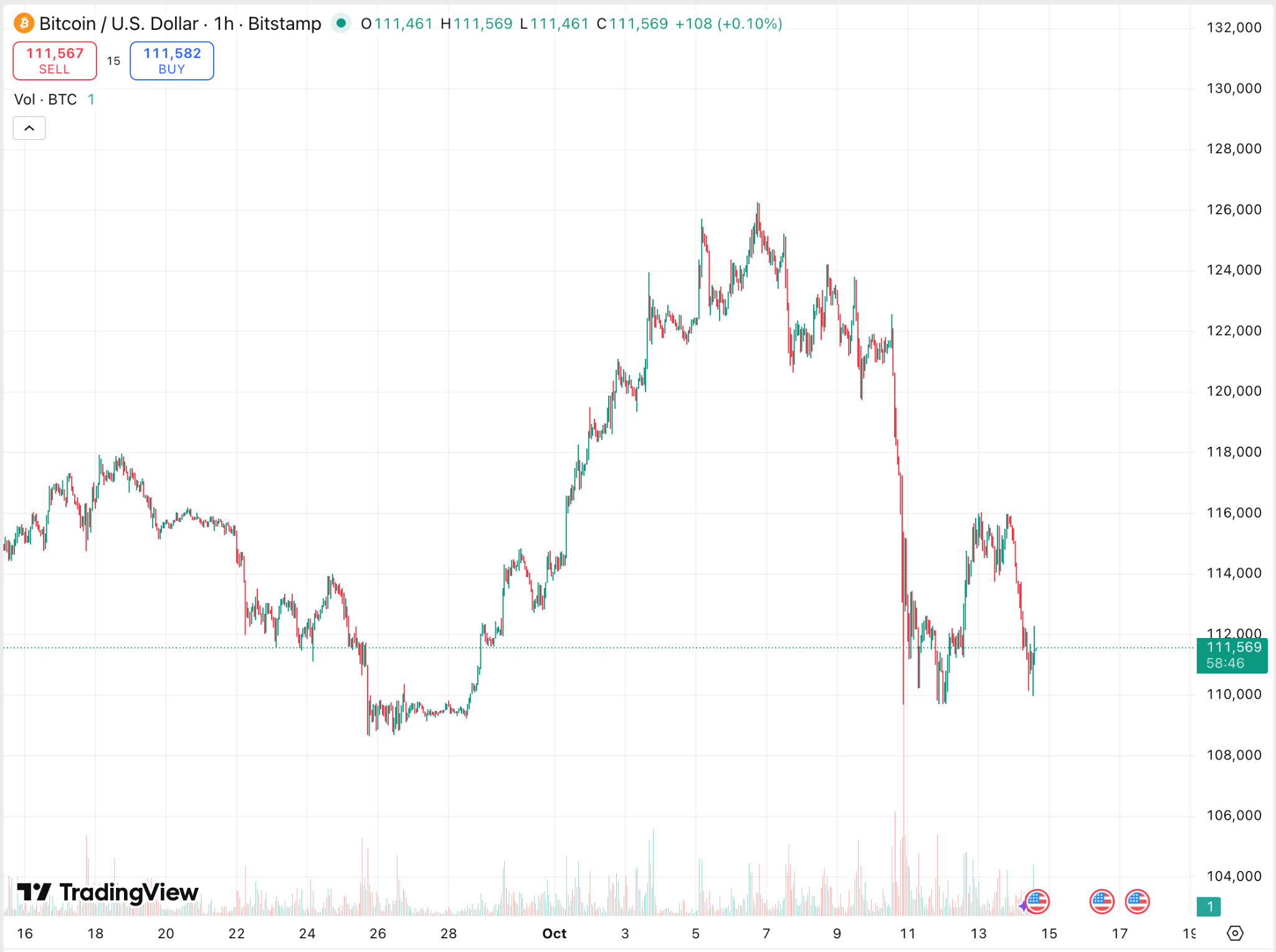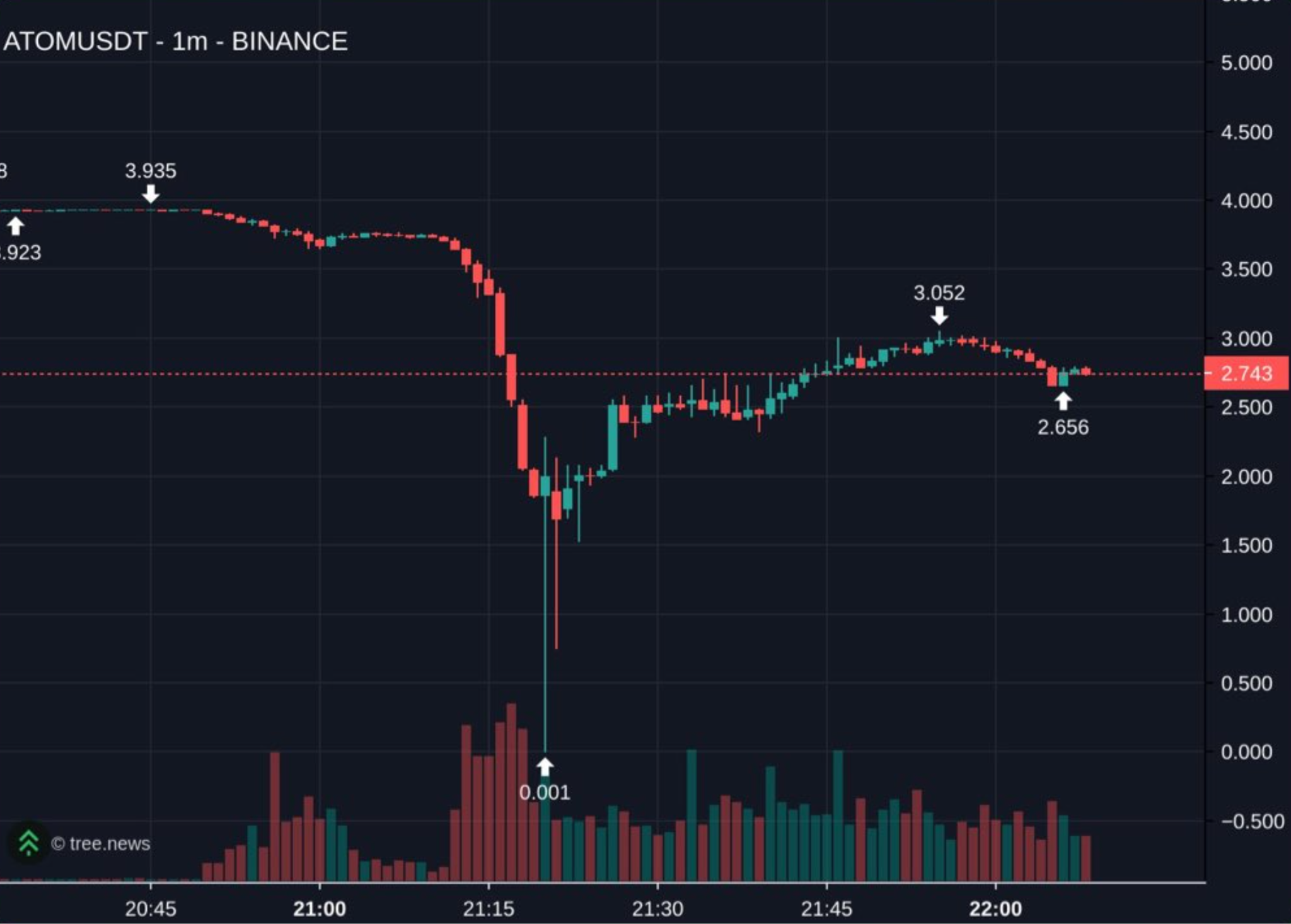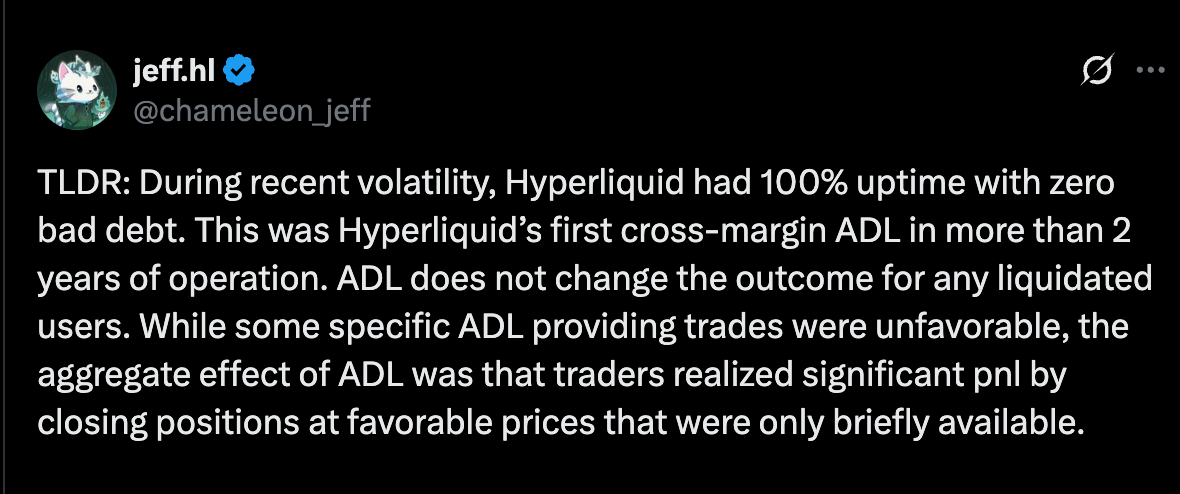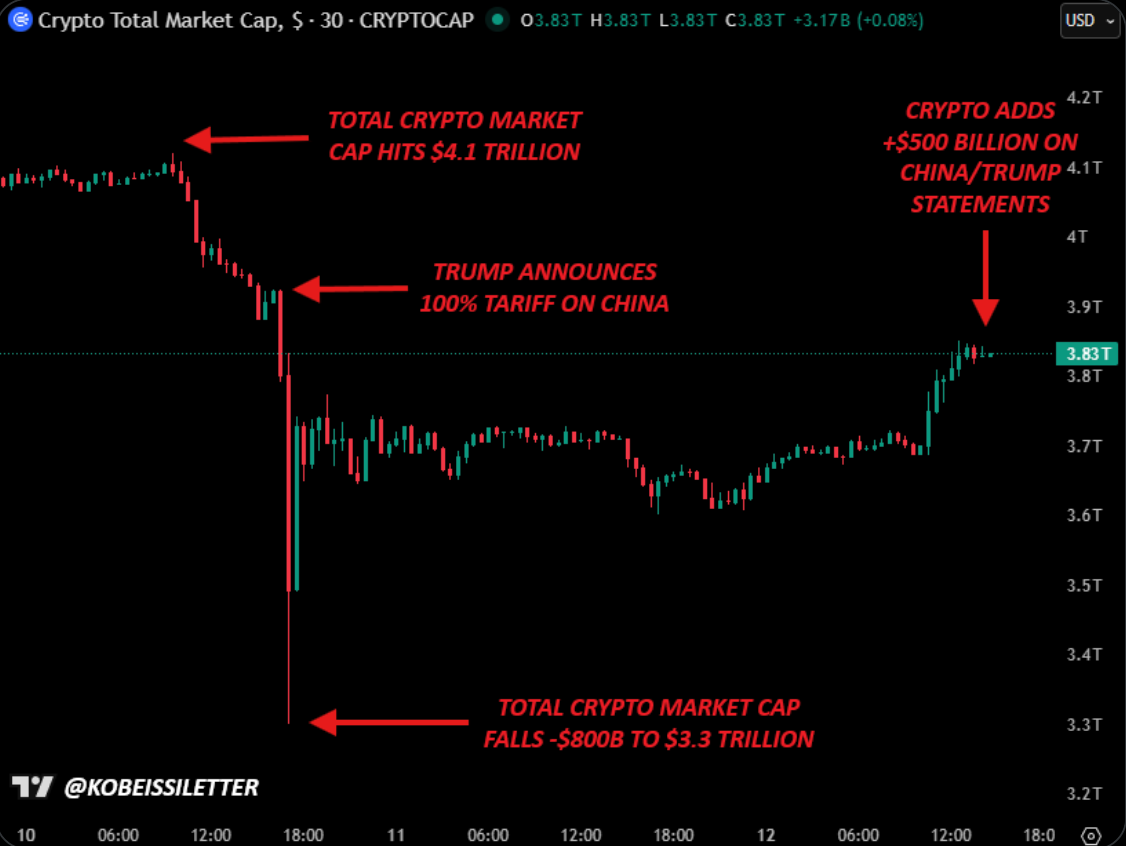Flash crashes are rare but powerful reminders of how volatile cryptocurrency markets can be. They occur when asset prices drop sharply in a short period before quickly recovering, often triggered by a combination of automated liquidations, thin order books, and market-wide sentiment shifts. October 10th, 2025, the crypto market experienced such an event, with assets such as Bitcoin and Ethereum seeing rapid downward movements before rebounding shortly after.
This article provides a neutral, fact-based overview of what occurred, how various platforms responded, and what broader observations can be drawn without attributing specific causes or making predictions. The purpose here is purely informational. None of the following content should be interpreted as financial advice. Instead, it aims to help readers understand flash crashes as part of the broader market ecosystem and recognize the importance of risk awareness in crypto trading environments.
What Occurred During the Flash Crash

The event unfolded swiftly on the evening of October 10, 2025, when sharp price movements cascaded across major cryptocurrencies. Bitcoin fell from roughly $121,000 to intraday lows between $102,000 and $110,000, before stabilizing somewhat in the hours that followed. Ethereum mirrored this volatility, dropping around 15–20% to near $3,400–$3,600. Meanwhile, altcoins like BNB, Solana, and XRP saw even steeper declines, some briefly dipping 25–30% on select exchanges. Across the ecosystem, market capitalization declined by an estimated $800 billion in one day (1).
Over $19 billion in leveraged positions were liquidated, one of the largest liquidation totals recorded in recent years (2). The rapid unwinding of leverage created temporary dislocations on multiple exchanges, with some assets briefly showing irregular price feeds or extreme anomalies. Such rapid corrections underscore how tightly interconnected crypto derivatives, liquidity pools, and spot markets have become, especially during periods of thin liquidity or concentrated leverage.
Market Impact and Observations

The flash crash exposed differences in platform resilience and liquidity management across the crypto ecosystem. Binance, the world’s largest exchange by trading volume, faced intermittent outages between 20:50 and 22:00 UTC, affecting both web and API access. During this window, users reported failed order executions, temporary login errors, and price feed discrepancies, including certain tokens like ATOM and IOTX briefly displaying anomalous near-zero values. Collateralized assets notably USDe experienced short-lived depegging events with its synthetic dollar dropping down to as low as 0.65 before regaining parity (3). Binance later confirmed it would allocate $283 million in compensation to affected users, citing system strain from extreme volatility.

In contrast, decentralized platforms like Hyperliquid showcased notable operational stability, maintaining 100% uptime throughout the event and processing over $1.23 billion in liquidations without any instances of bad debt. Roughly 6,300 wallets were impacted, yet the platform’s infrastructure remained stable, reinforcing confidence in decentralized derivatives systems during periods of high volatility. Other decentralized exchanges, such as dYdX, also performed consistently. However, not every protocol held up: Lighter DEX experienced a 36-minute outage due to a database upgrade that coincided with peak turbulence (4). The team later announced plans to reimburse users affected by failed orders in stablecoins. On the centralized side, BitMEX issued a post-event report emphasizing lessons on infrastructure scaling and execution latency under high-stress conditions (5). Meanwhile, market observers highlighted that Bitcoin ETF liquidity appeared relatively stable, helping dampen the extent of price dislocations compared to prior flash crashes (6).

Recovery and Aftermath

By October 12th, prices across most major cryptocurrencies began to rebound as volatility eased and trading volumes normalized. Bitcoin recovered to the $113,000–$115,000 range, while Ethereum climbed back above $4,000, reclaiming a significant portion of its losses. Altcoins, which had suffered deeper drawdowns, staged partial rebounds, some gaining 10–20% within 48 hours. Total market capitalization rebounded by roughly $200 billion, reflecting renewed buying activity and stabilization in derivatives funding rates (7).
This rebound pattern mirrors prior flash crash recoveries, such as the March 2020 sell-off and the May 2021 correction, where rapid deleveraging was followed by swift normalization once liquidity returned. While the market’s bounce reinforced perceptions of resilience, it also reignited discussions about the systemic impact of high leverage, automated liquidations, and cross-exchange correlations, which remain defining factors in modern crypto market mechanics.
Key Takeaways for Crypto Enthusiasts
Flash crashes are not new to crypto, they are part of the market’s DNA. Their speed and magnitude, however, continue to surprise even experienced participants. For everyday traders and observers, these moments serve as reminders of how rapid, global, and emotionally charged crypto markets can be. The event underscored the importance of understanding how liquidation cascades, exchange liquidity, and derivatives markets interact.
From a broader educational perspective, this also highlights why risk management and market awareness matter. Principles such as diversification, position sizing, and using reputable platforms with robust infrastructure such as Netcoins can help mitigate exposure during volatile periods but these are general concepts, not recommendations. Each participant’s situation differs, and crypto remains inherently unpredictable. Readers should always conduct independent research, stay updated via reliable sources, and approach volatile events with caution and perspective. Again, nothing in this article constitutes financial or trading advice.
The October 2025 flash crash demonstrated the high-speed, interconnected nature of today’s digital asset markets where volatility can strike without warning, yet resilience often follows swiftly. Despite billions in liquidations and temporary outages, the ecosystem rebounded with notable speed, supported by both centralized and decentralized infrastructure.
As the crypto industry continues to evolve, each such event offers lessons on stability, transparency, and innovation. Exchanges and builders alike are working to refine systems that protect participants while preserving the open, global nature of blockchain-based markets. For those looking to stay informed, Netcoins provides tools to track prices, monitor market trends, and learn about digital assets safely and responsibly helping Canadians engage with crypto from a position of understanding, not speculation.
Resources:
- Kobeissi newsletter
- Kobeissi newsletter
- $2B Ethena USDe depeg exposes cracks in crypto’s ‘synthetic dollar’ system
- Lighter Ethereum L2 Goes Offline for 5 Hours Amid Volatile Trading
- BitMEX Resilience: A Post-Mortem on the 11 October Flash Crash
- Serious BlackRock ETF Warning Issued After ‘Extreme’ $500 Billion Bitcoin And Crypto Price ‘Flash Crash
- Cryptos Rebound After Weekend Flash Crash
The information provided in the blog posts on this platform is for educational purposes only. It is not intended to be financial advice or a recommendation to buy, sell, or hold any cryptocurrency. Always do your own research and consult with a professional financial advisor before making any investment decisions. Cryptocurrency investments carry a high degree of risk, including the risk of total loss. The blog posts on this platform are not investment advice and do not guarantee any returns. Any action you take based on the information on our platform is strictly at your own risk. The content of our blog posts reflects the authors’ opinions based on their personal experiences and research. However, the rapidly changing and volatile nature of the cryptocurrency market means that the information and opinions presented may quickly become outdated or irrelevant. Always verify the current state of the market before making any decisions.



.png)

.png)
.png)




